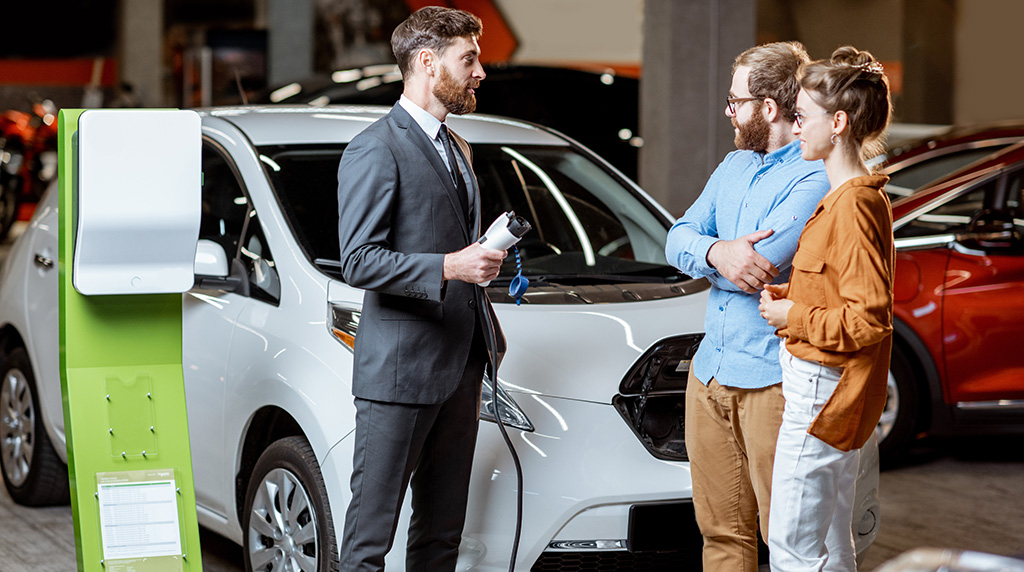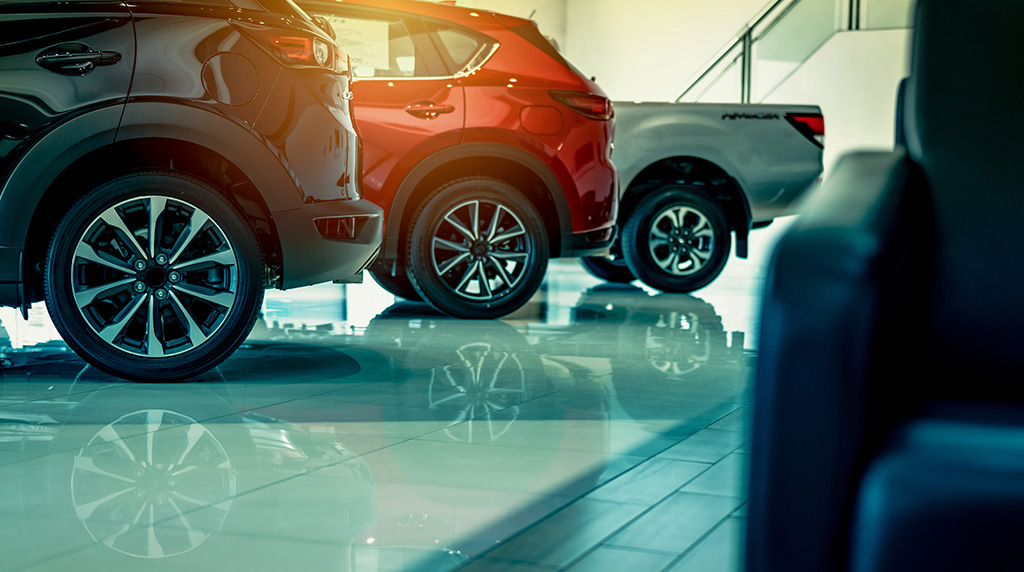LAST week GoAutoNews Premium began a fresh perspective on the auto industry by the Pitcher Partners motor industry services team which told the story of how we got to where we are today in automotive retailing and how we are at the end of a five-decades long decline and transition.
This week, against that background, the team highlights the first five of its list of the top 10 challenges that dealers and the OEMs are facing in the next financial year.
1) EV’S
EVs are the future. So, as a dealer, it’s about getting onboard
Problem is they are the destroyer of profit for a dealership in its current configuration.
The facts
The things we know are that at a 75/25 ICE-to-EV ratio dealers can maintain profitability.
At 50/50 its breakeven, at 25/75 you are printing losses.
The solution
Until such time as you are completely ready to pivot to EV’s, you must keep your ICE/EV sales volume at 75/25 by understanding your supply chain of ICE vehicles.
The supply chain
- Used cars (ICE), local and imported
- Slow move to EV brands
- Low EV model mix brands
What does pivot to EV’s mean in operational terms?
- Recognising the diminishing profitability of service operations – there is no money in it at volume, start consolidation of workshops as RO volumes decline and exit properties.
- You will need to be selling three to five times your normal volume and grosses (ignore today’s grosses as you know how unprofitable the front end can be)
- Minimum fifty units per sales consultant
- Rent per unit should be below $200 – at a future $1500 gross/agency fee it’s all you can afford
- Align with a financier, electricity provider and subscription provider. It is the future.
- Customer interactions are the lifeblood of your business, you need to manage and influence these interactions
2) Agency
This is the OEM’s precursor drug for EV’s.
Why?
Dealers exist to support the technical and mechanical needs of an ICE vehicle in a certain geography, that’s it!
With no ICE vehicles, you do not need geographically-heavy dealer networks. Customers will use a combination of online, push CRM and “car to drive an hour or so to look at new EV’s.
Current unaffordable prices of EV’s (created by the “supply shortage” scenario) will not flow through to the OEM’s agents in commission.
As a sunrise industry, the extra margin flows through to the manufacturer to recoup investment in the innovative technology and make a great profit (it is payback time for the OEM’s).
Agency is the model of choice as it allows:
- Flexibility – “Fewer dealers with less collateral damage at closure for OEMs
- Ability to control price to effectively control market share
- Ability to control share of margin better (commissions are easier to control than profit shares)
- Ability to direct margin to goals (volume-based incentives)
- Ability to exit the distribution model when the time warrants to cut out the middleman
The only truth is that dealers should not hang on to the fact that the agency model is dead just because it is not working today.
It is the transition model out of the franchise model and the OEMs are learning and defining the process.
Best example is to look at the EV only brands; they either go it alone or align with very large groups who can make a sufficient ROI by volume.
It is important to give serious thought to whether the agency model is truly the future you want.
Don’t simply rely on others’ opinions! However let’s say that, at some point, an agency model becomes mandatory in some form. In that case, your best bet is to stay adaptable and be ready to adjust. Take a careful look at the requirements, find creative ways to make it work for your business, and make the necessary changes. The key is to navigate the new rules effectively and ensure your business continues to thrive.
Consider this from the OEM’s perspective; if you were spending billions or trillions of dollars reinventing yourself and wanted to maximise your ROI, would you keep a distribution model that they consider expensive, lacks flexibility and subject to failure due to a lack of profitability by the participants?
The rules are currently being written as we go; we understand agents are being “performance managed” on volume. When we last looked at it, agents did not sell cars or have stock (under agency, that’s the OEM’s job), so we would have thought it’s hard to performance-manage dealers on things that are not in their remit.
We see dealers being compelled to make facility upgrades, under the risk of termination, without any assurances of future dealer agreements that would offer a reasonable payback period.
An agency agreement is not equivalent to a dealer agreement! Do not think it has the same level of value to you as a dealer.
3) Maintaining Supply in a supply constrained market
For dealers, the equation is simple:
- Stock the cars that you sell
- Market them to the customers that you sell them to
The word under most threat here is “sell.”
By following the OEMs down the path of least resistance over the last 20 years, dealers have threatened the existence of the two key assets in their arsenal.
It’s not too late to right the ship.
Always remember in Australia the used car market is 3.5 to 4 million cars per annum and the new car market is one million.
Dealers need to re-earn their share of the largest car market in Australia, and we genuinely believe this is where the dealers need to enlist the full support of the AADA as their peak body.
It’s ok for dealers to have a good relationship with the FCAI or the EV Council. However for “dealers” (not agents) to survive, the focus needs to be on used car supply chains and winning back dealer share.
In our opinion, securing imported supply chains is crucial for dealers to gain broader access to the private market. At present, the imported market is almost criminalised, which makes no sense as all of our cars are imported at present anyway. Whether they have some KMs on the clock or not is irrelevant.
Rather than working to ban used imports, the focus from dealers should be on embracing it and make it work within the confines of our current regulatory systems. A Hilux with 20,000 km on the clock driven in Japan can be no worse than a 20,000 km Hilux driven in Australia.
Source of supply and rules around warranty and parts supply are the key.
Given the global decision to cease local production of new cars in Australia, it becomes apparent that focusing solely on a new car import strategy lacks logical reasoning. The reliance on imports poses risks, as supply can be restricted unexpectedly, and pricing can be influenced by external factors beyond our control, as is currently the case.
4) Facilities
Again, simple facts:
- To generate profits, it will be necessary to achieve significantly higher volumes within a significantly smaller square footage.
- Rent per unit will be critical. The front end is historically unprofitable, with low gross/commission and no parts and service you need to really control costs (think of a Telstra store).
- Avoid any facility upgrades at present as it is not a smart investment, unless it comes with a guaranteed 15 year “dealer agreement” under existing terms. We know this isn’t currently realistic, but why shouldn’t it be?
- Start planning your current footprint exit – clearly service will diminish first, so look at consolidation and exit strategies over the next 10 years.
- Investigate air rights – car showrooms will still exist so for many dealer locations a mixed-use retail/residential zoning may be perfect. Gives you the ability to tap the property value and keep the showroom.
- Think like an investor not a car dealer
- If the threat is termination, that may be your best investment option. Your car dealing future is uncertain, your property investor future is far more certain. We are not sure the industry you see as fun will be as much fun for much longer.
- If your facility holds strategic importance for the OEM, consider offering them the opportunity to rent it, or even the option of having residential units built on top of it.
5) Build your own brand
Ask the previous owners of Duttons Garage how they are feeling right now. They built a brand and sold it for a significant sum … there is nothing wrong with that.
Remember, the current future plan is about building someone else’s brand, which is why it is called agency.
If you have a different plan, take the initiative now and create your own destiny. If you want to continue to play car dealer, make your own rules.
MORE NEXT WEEK
PART ONE: Moving from Sunset to Sunrise …: CLICK HERE
By Steven Bragg, John Gavljak, Wayne Pearson, Aidan Cousin & John Brockhouse
















 Read More: Related articles
Read More: Related articles

